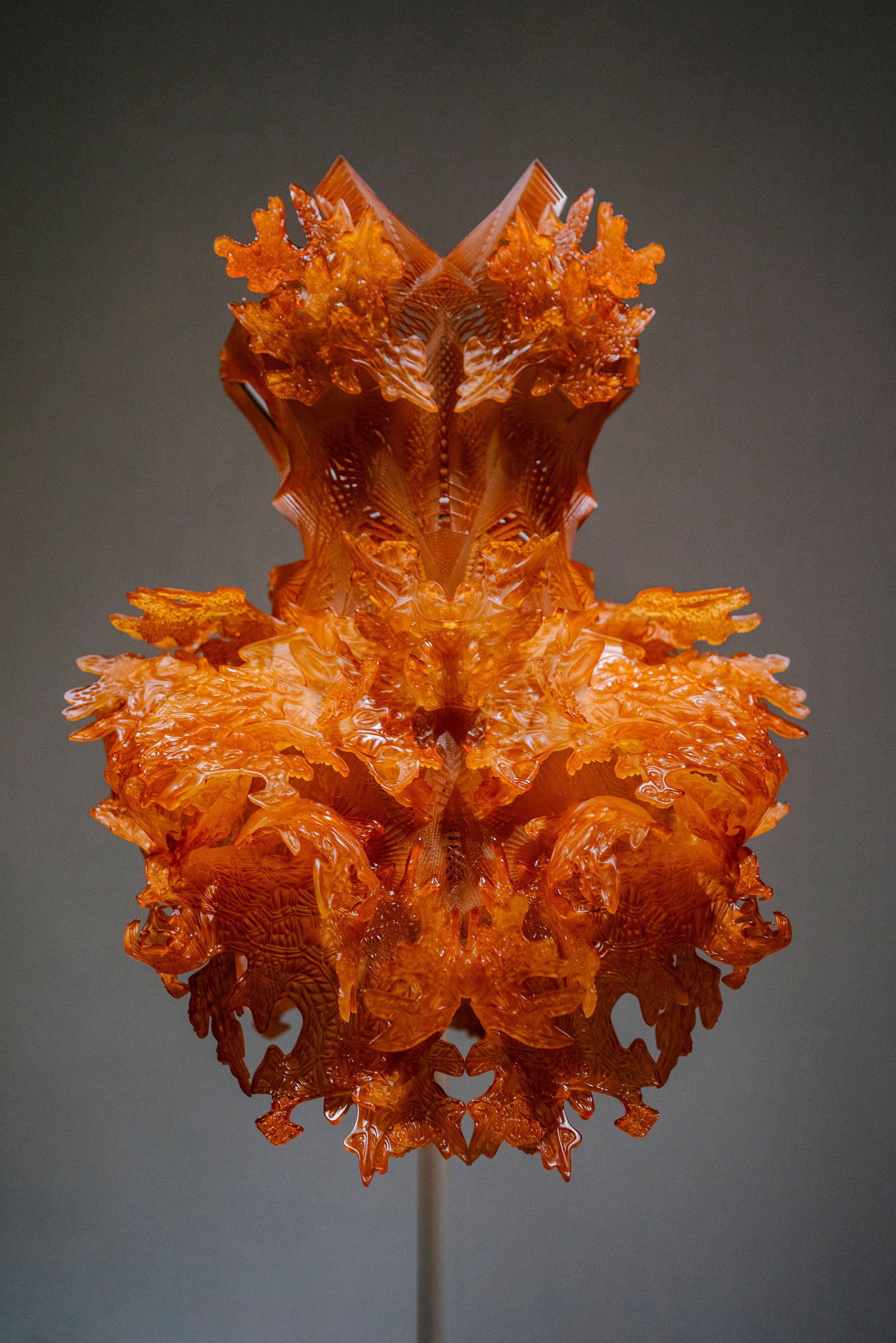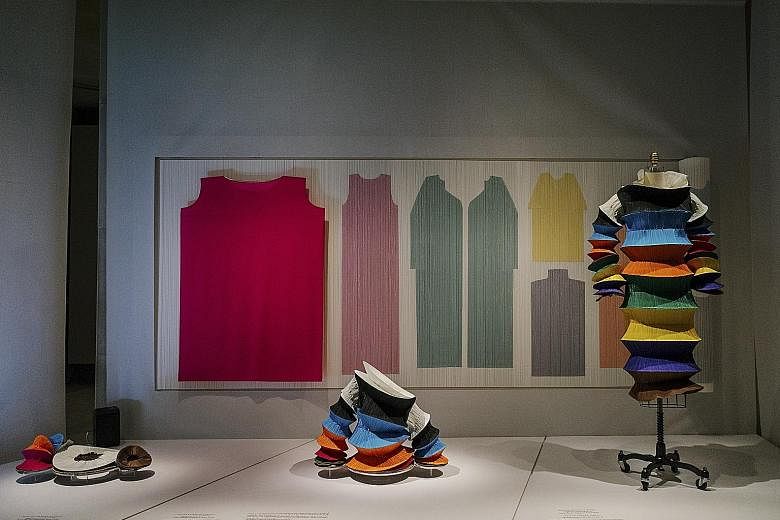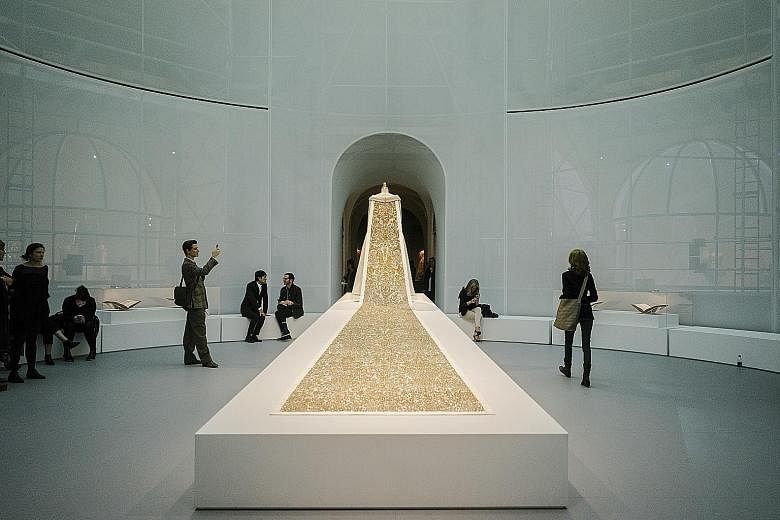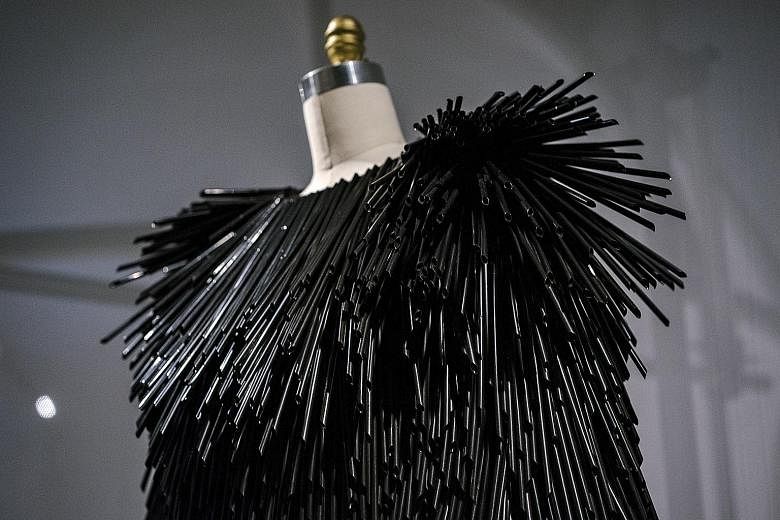NEW YORK• Sometimes fashion is art, sometimes it is just stuff to wear. Other times, it is mind- boggling craft and exquisite technique whose aesthetic strangeness can render the art question moot.
That is the effect of Manus x Machina: Fashion In An Age Of Technology, the latest of the Metropolitan Museum of Art's annual fashion extravaganzas from its Costume Institute, and one distinguished by a lack of Met Gala-style hoopla.
It celebrates the luxury wares of mostly French fashion houses, but brings fresh focus to the convergence of traditional haute couture and high-end ready-to-wear through a shared reliance on intricate tech-savvy processes.
The exhibition is sponsored by Apple and comes at a time when tech companies are edging into fashion with their own athleisure lines.
The show is a stately, gorgeous tutorial. Encompassing 170 ensembles and dresses, it examines how haute couture, long associated with impeccably handmade garments tailored to individual clients, is integrating breakthroughs in technologies and materials.
Technology (machina) is not replacing the hand (manus). Rather, the two are collaborating as never before, stimulating innovation and expression.

This is evidenced by an assortment of dresses, several of them by the imaginative Dutch designer Iris van Herpen, that border on sculpture in their form and lack of function. The often complex joinings of forces are spelt out in labels where various kinds of handwork mingle with references to 3D printing, laser this and laser that, ultrasonic welding and custom software- rendered patterns.
As these extravaganzas go, Manus x Machina is exceptional, its clarity and serenity distinguishing it from quite a few of its predecessors at the Costume Institute. It was organised by Andrew Bolton, who became its head curator in January, with the retirement of the widely respected Harold Koda.
Bolton has always aimed high, often guided by a flair for showmanship. He was responsible for the finely honed spectacle of the Alexander McQueen retrospective in 2011. But he also organised the overreaching Punk: Chaos To Couture.
Manus x Machina is structured according to six of the metiers - or trades - of dressmaking that are as essential to couture today as they were in the mid-18th-century.
The metiers here progress from embroidery and featherwork, through artificial flowers, pleating, lace and leatherwork.
Metiers have usually been handled by outside specialists famous in their own right, among them Maison Lesage (embroidery), Maison Sophie Hallette (lace) and Maison Lemarie (feather and leatherwork).
The show opens with the first of several case studies, the term used here for a featured garment whose making is detailed in an extended wall label.
This one is a Renaissance-style wedding dress designed in 2014-15 by Karl Lagerfeld for Chanel. Made from creamy synthetic scuba knit - which holds shape very well - it has a 6m train painted and printed with slightly pixellated gold foliate pattern based on a sketch by Lagerfeld.
This pattern is projected, greatly magnified, on the dome overhead - a beautiful effect that recurs more modestly with the other case studies.
The clothes reach back more than 100 years, indicating that couture has kept up with innovations, among them the sewing machine (used to make a Paul Poiret coat in 1919) and machine-made lace (Coco Chanel in the late 1930s).
The difference between handmade and machine-made is sometimes hard to discern, sometimes blatant, as in the show's dynamic lace section. Plastic is usually a sign of machine intervention, but even the thatches of common plastic straws - clear and black - in two recent dresses by Gareth Pugh are hand-cut and attached individually.
His garments introduce the feather-work section, where the shocker is a dress by van Herpen that includes laser-cut silicone feathers and three silicone-dipped gull skulls. The stunner is a long princess-line evening dress by Raf Simons for Dior that is covered with small (hand-glued) rooster feathers in a rainbow of subtle colours.
The embroidery section has an aquatic tone. Scales are a motif and sequins a recurring material, as signalled by Yves Saint Laurent's astounding "sardine" dress of 1983.
The artificial flowers portion includes Hussein Chalayan's metallic gold cast-fibreglass Kaikoku floating dress of 2011-12, a motorised cone on wheels decorated with dozens of crystals on wings that, prompted by remote control, fly into the air - like pollen, the label says.
Saint Laurent is known to have said: "Art is a very big word for couture. It's a metier like any other, but a poetic metier."
Bolton quotes these words in his ravishing exhibition, which makes fashion feel bigger without fussing over its artistic status.
NEW YORK TIMES
•Manus x Machina runs through Aug 14 at the Metropolitan Museum of Art in New York.



